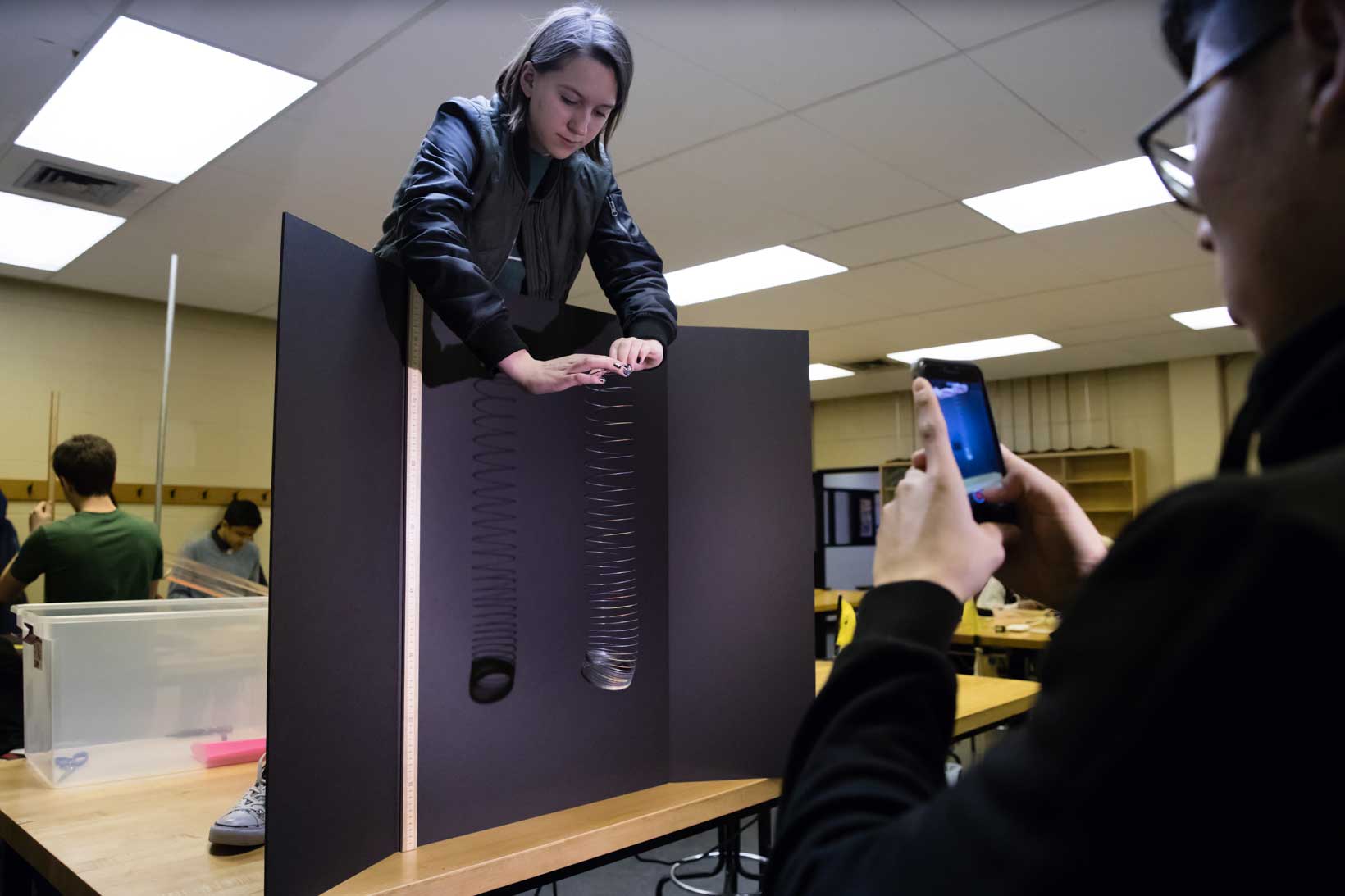
Each fall, “Physics 123: The Newtonian Synthesis: Dynamics of Particles and Systems, Waves,” taught by Professor David Hanneke (with physics teaching fellow Dr. Moumita Dasgupta and teaching assistant Ilija Nikolov '20), explores a range of simple physical laws. The capstone of the course is a three-week project during which students design an apparatus to test kinetic energy, the laws of angular momentum and other concepts.
This is the second year that Hanneke capped his advanced introductory physics course with a “design-your-own adventure” project. The aim: to give students a chance to experiment with physical laws in action. His students, a mix of first years and sophomores, split into groups and came up with creative tests to analyze motion, calculate translational velocity and study momentum and gravity.
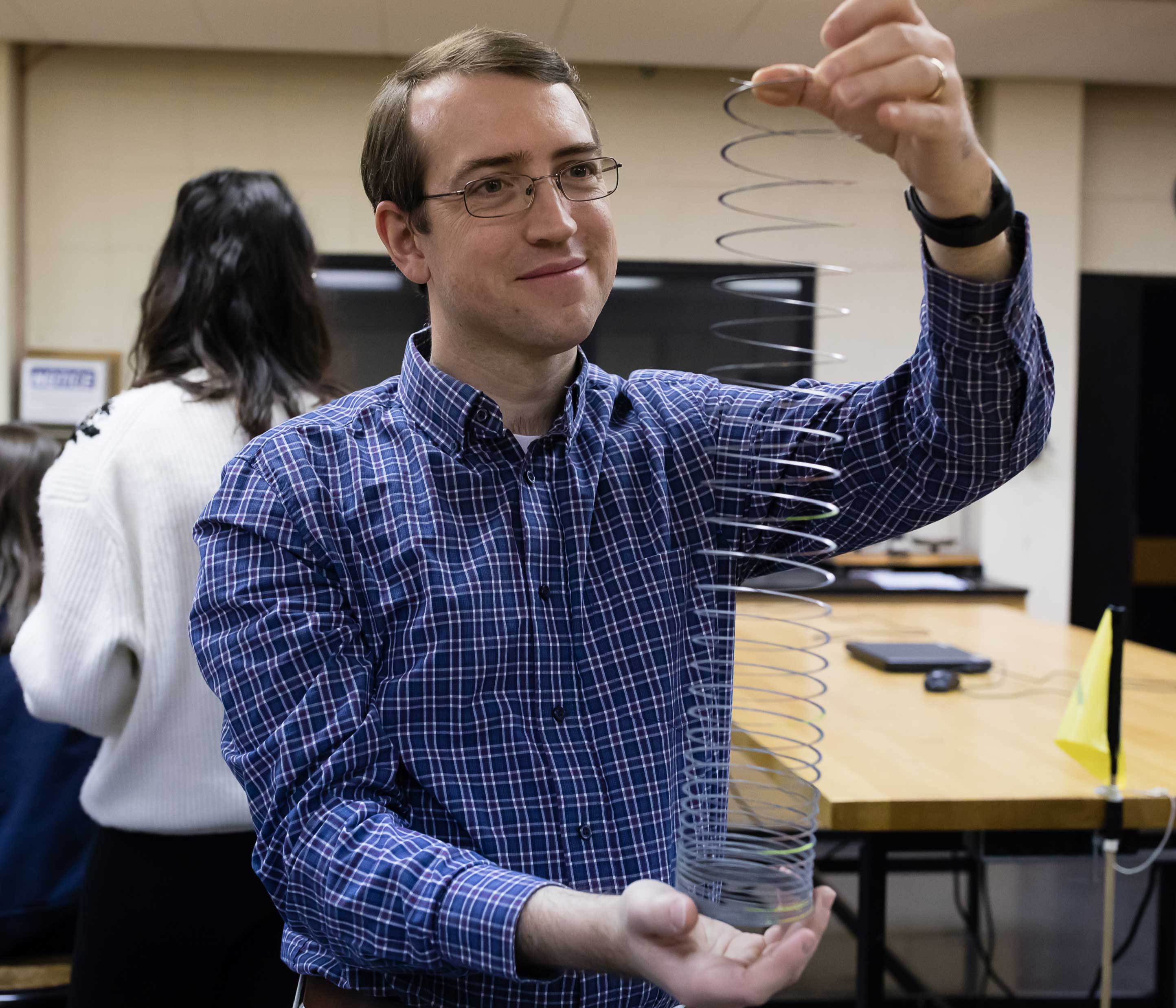
For this final project, Hanneke (pictured above) put the students in three classrooms— enough room for ball bearings to fly, pendulums to swing and small pegs to be launched across the room. He said he expects the new Science Center, currently under construction, will open up more space—and more possibilities—for giving students room to experiment.
Students divided into six teams, nicknamed: Big G, Slinky, Friction, Rolling Things, Pendulum and Flipper.
Big G Team
The “Big G” group worked with a Calvandish Balance so delicate and specialized that simply having too many people in the room—or photographing it—could throw it off. When one of the group members casually leaned against a countertop, the experiment had to be put on hold for 20 minutes so the apparatus could reset. “I’ve pretty much given them the apparatus and I’m letting them figure out what to do with it,” said Hanneke of the apparatus. “It’s gravitational force measured on small scales. After doing this experiment, you can see how long a year is and weigh the sun. And look at how long it takes the moon to go around the earth and weigh the earth.”
Project: "Calculating G using a Torsion Balance." Project Team: Matthew Perkins '21, George Spencer '20, David Wang '21, Calvin Woods '21
Slinky Team
The slinky team, in its attempt to analyze the motion of the toy spring as it dropped, first had to figure out how to mark sections of the slinky. First they tried colored tape, but they rejected that method because it tended to create gaps in the spring coils that changed the motion. The group eventually decided on neon spray paint. “It was like we were waiting for paint to dry,” said Rilla McKeegan '21, explaining the process during the class presentation. “Literally.”
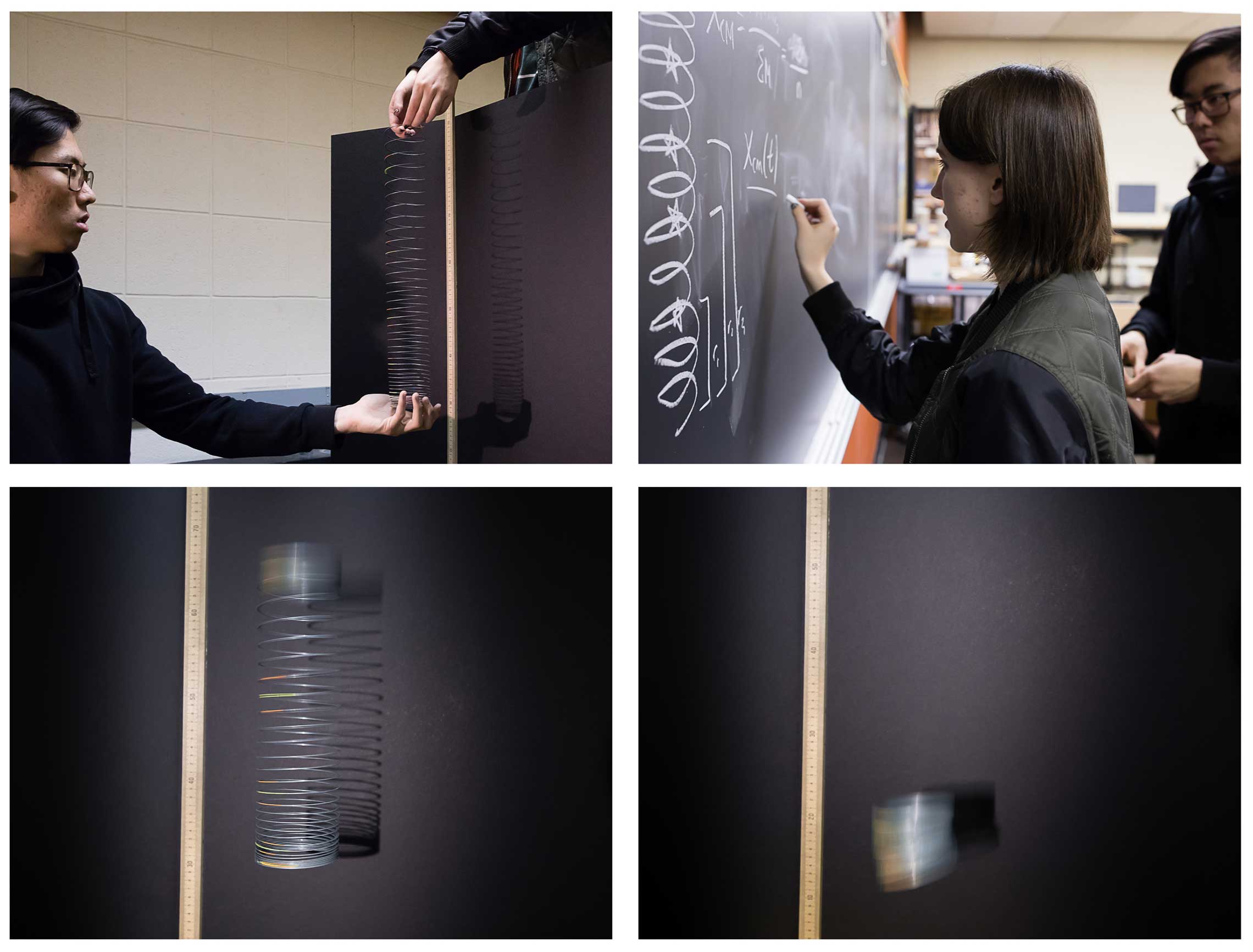
Friction Team
The friction team measured the pull of a block of wood across various surfaces, such as sandpaper and silk. “Despite our best efforts, we were not able to overcome bunching,” the students noted during their class presentation.
Friction team member Emily Fedor ’20 said that she was surprised by how much the project taught her about the mechanics of physics. “As a math major, I thought that would make me better at physics,” she said. “I realize that’s like saying being good at calligraphy makes you better at poetry.”
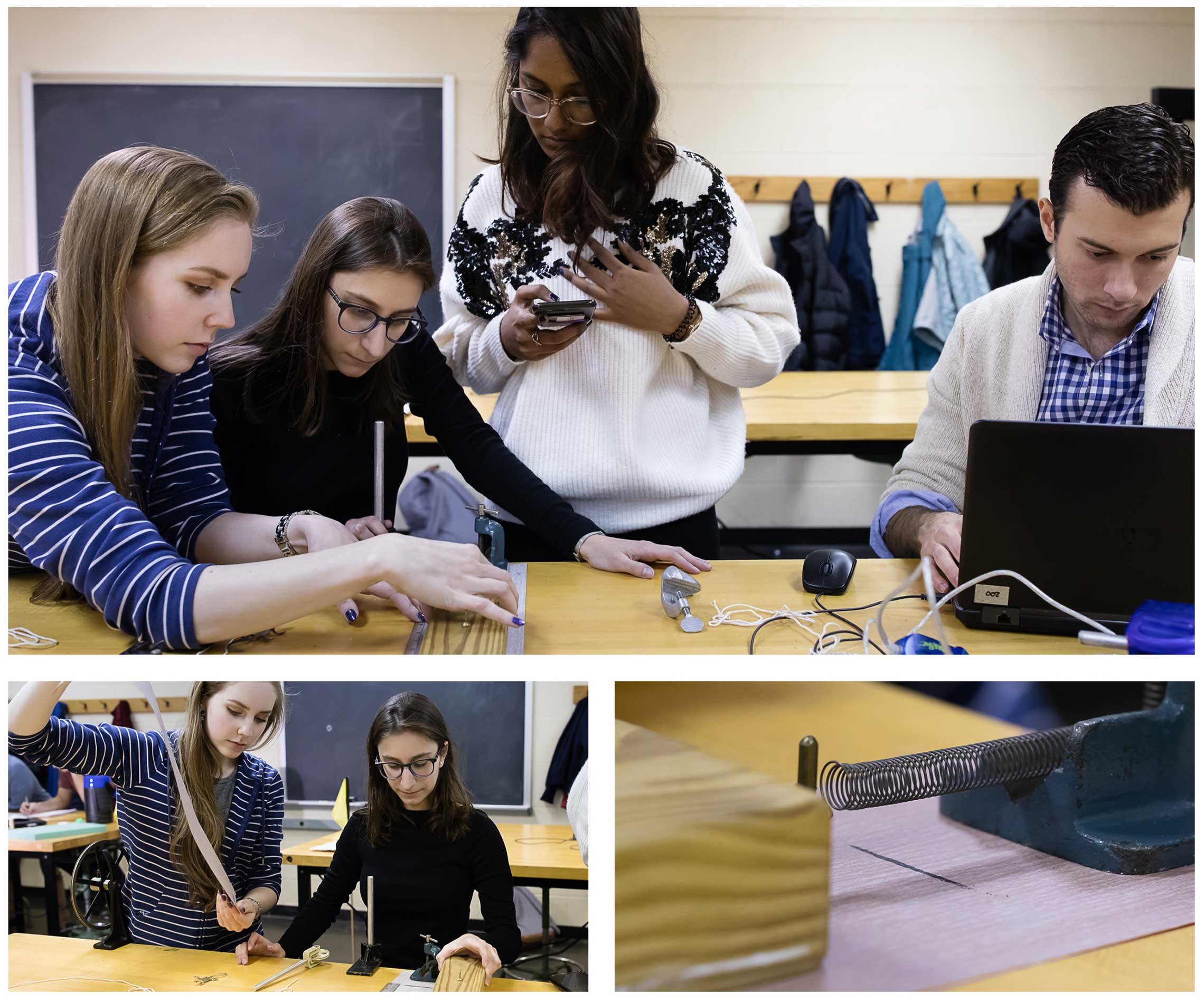
Project: Spring Constant Determination from the Static Friction Coefficients of Various Surfaces. Project Team: Yusrah Kaudeer '21, Amanda López '20, Emily Fedor '20, Renan Vianna '20E
Rolling Things Team
The group “Rolling Things" created a giant loop-the-loop with a large ball bearing that kept shooting off the jerry-rigged track at unexpected angles.
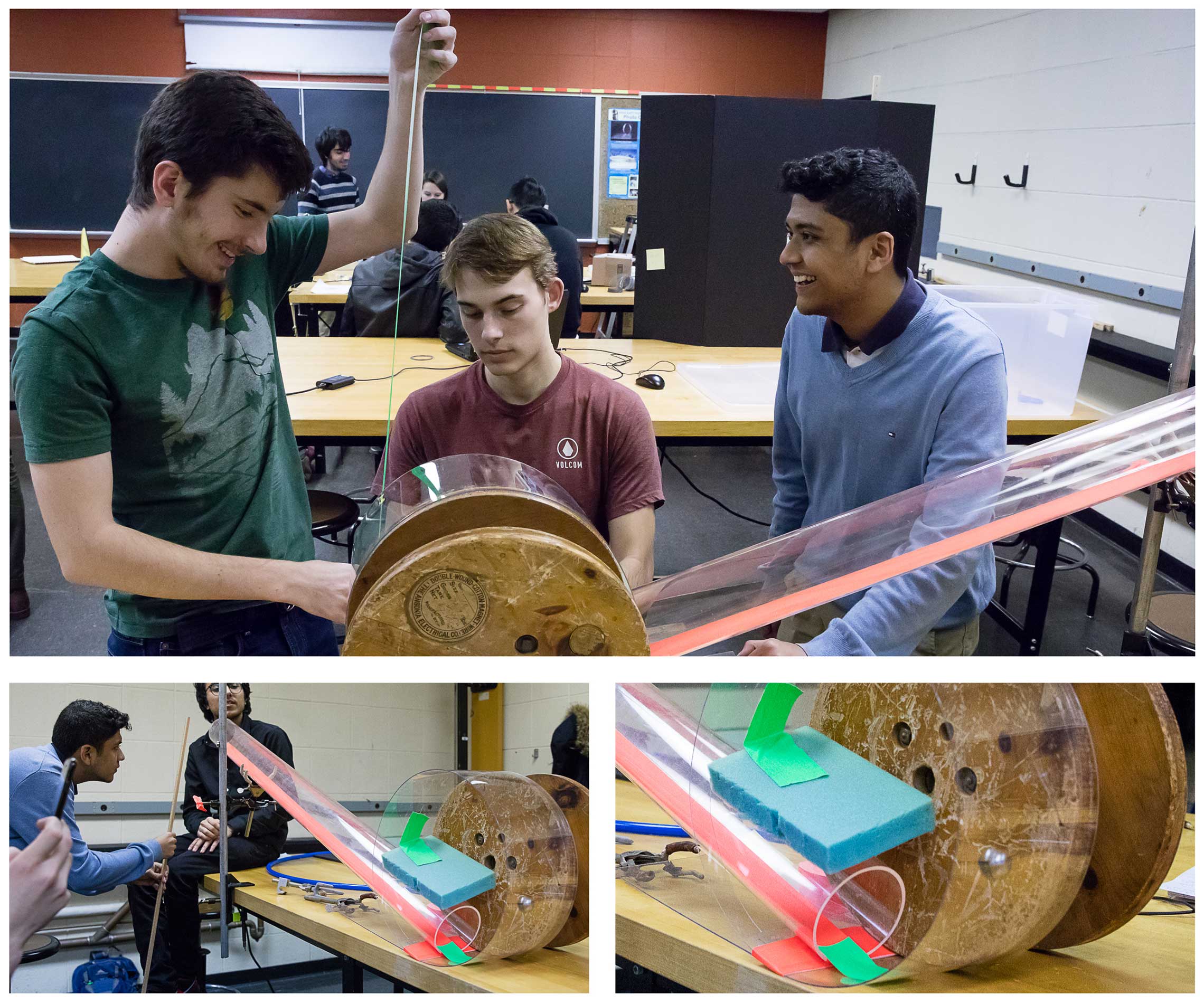
Pendulum Team
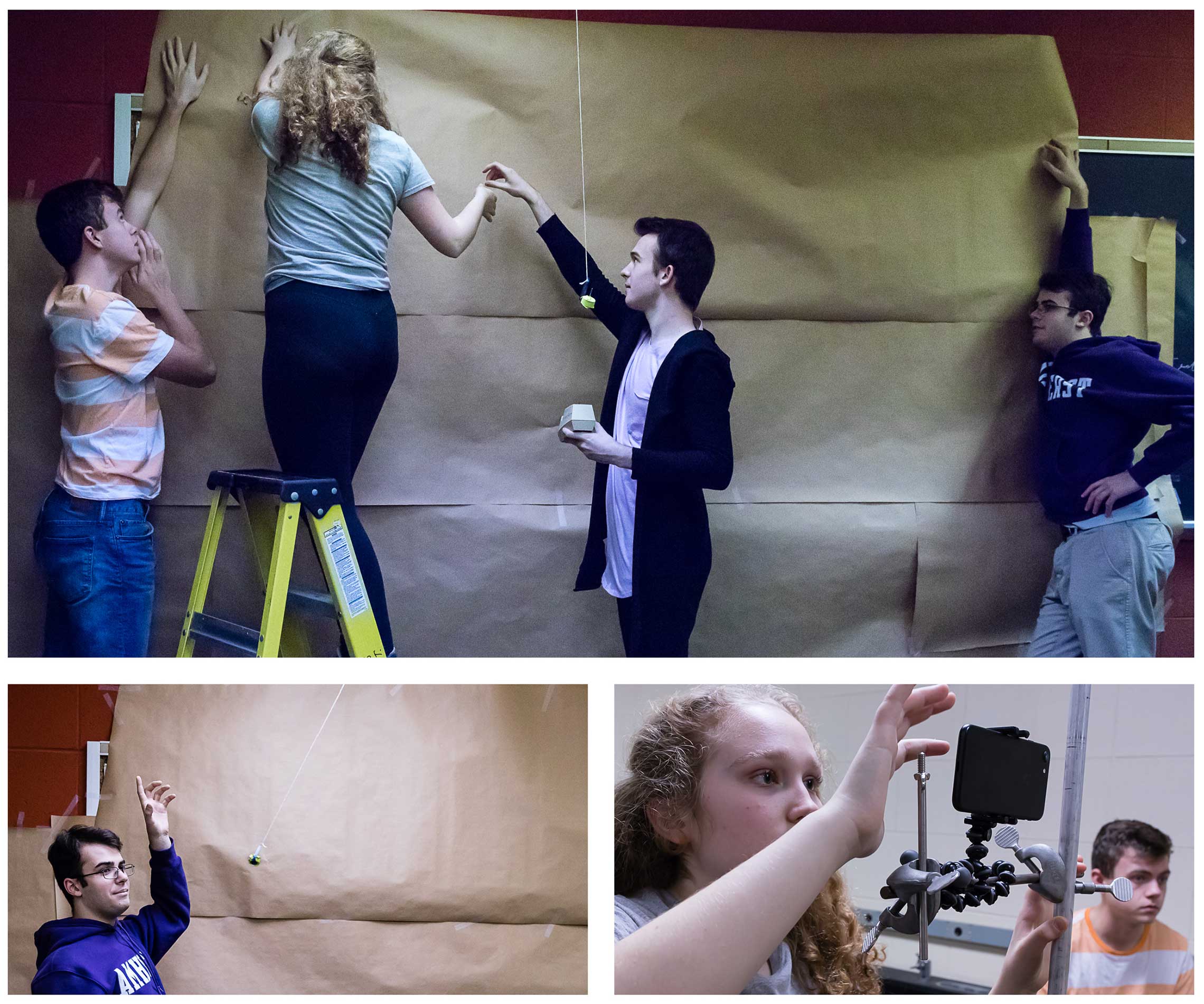
Flipper Team

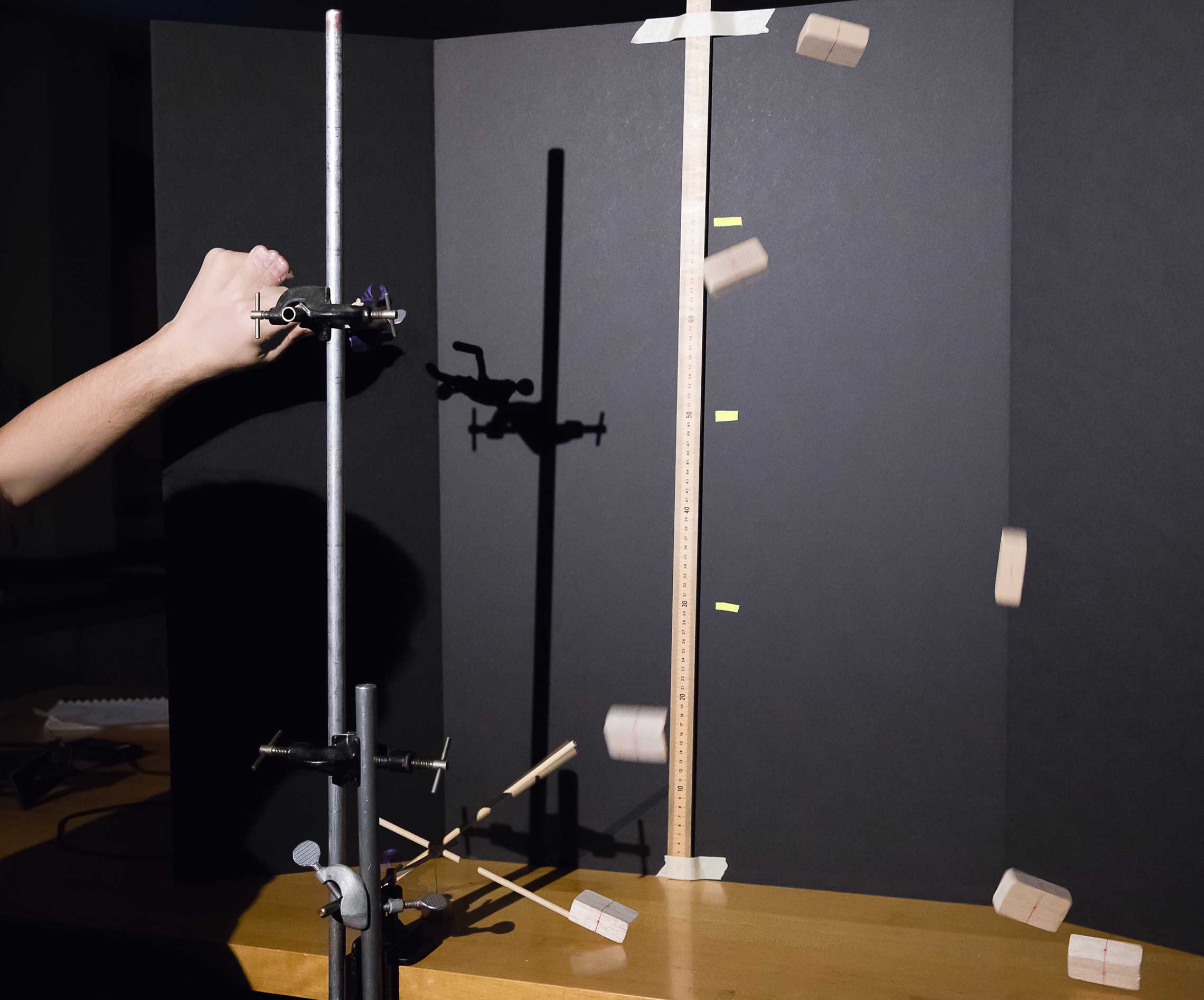
Project: "Unique Collision: Testing Energy and Angular Momentum Conservation." Project Team: Theodore (Teddy) Stubbs '21, Jonah Botvinick-Greenhouse '21, Sarah Wishloff '19, Ruoyu (Rachel) Chang (Hampshire College).